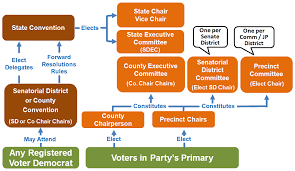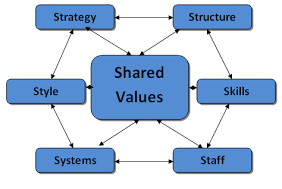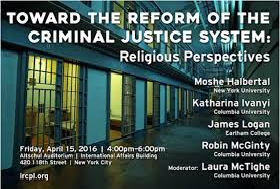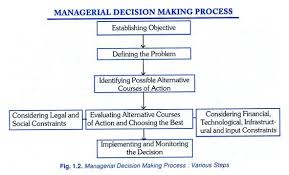
Globalization of education
Globalization of education
Order Instructions:
Assignment 4: Research Paper Part 3 – The Results
What do reporters, crime scene investigators, and sports broadcasters have in common? All of these occupations are focused on reporting the results from data or information. The final part of your research paper is about the data procedures, reporting, and interpretation of the results of your research topic.
For this assignment, you will create the last part of your research paper. Build on your paper from Assignments 2 and 3, and integrate feedback from your instructor. You should use the headings below for the sections of your paper.
Write a twelve to fifteen (12-15) page paper (this includes the work you already completed in Assignments 2 and 3) in which you:
These items you should have already completed in Assignments 2 and 3:
1. Describe the:
a. Introduction to your topic.
b. Purpose of your research.
c. Problem statement.
2. Summarize the literature you collected related to your topic.
3. Identify the:
a. Gap(s) in the literature.
b. Research question or hypotheses of your topic.
c. Proposed theory for your research.
4. Identify two to three (2-3) common themes in the literature.
5. Contrast the findings and results of the literature.
6. Include seven to ten (7-10) peer-reviewed quantitative articles related to your topic.
These items are new for Assignment 4:
7. Describe the participants in the study.
8. As you are conducting quantitative research, describe the instrument participants completed in the study.
9. Explain the procedures that you conducted.
10. Perform the data analysis.
11. Summarize your findings.
12. Interpret the results of the data analysis.
13. Summarize the findings and limitations of your research.
14. Address the feedback from your instructor for Assignments 2 and 3.
ATTENTION: REFERENCES SOURCES MUST NOT BE OLDER THAN 2010
Your assignment must follow these formatting requirements:
• Be typed, double spaced, using Times New Roman font (size 12), with one-inch margins on all sides; citations and references must follow APA format. Check with your professor for any additional instructions.
• Include a cover page containing the title of the assignment, the student’s name, the professor’s name, the course title, and the date. The cover page and the reference page are not included in the required assignment page length.
The specific course learning outcomes associated with this assignment are:
• Identify a research topic and describe why it can and should be studied.
• Determine the appropriateness of peer-reviewed literature to support research topics.
• Use technology and information resources to research issues related to educational research methods.
• Use quantitative and / or qualitative approaches to create research topics.
• Analyze research methodologies that support specific research topics.
• Describe ethical considerations in the research process.
• Evaluate components of a research proposal.
• Write clearly and concisely about educational research methods using proper writing mechanics.
• Determine the appropriate research procedures when designing a quantitative study.
• Determine the appropriate research procedures when designing a qualitative study.
The below are the feedback from the instructor for the assignments 2 and 3.
Assignment 2: You did not submit or incompletely identified the gap(s) in the literature, research question or hypotheses of your topic, and proposed theory for your research.
Assignment 3: Does not meet the required number of references; some or all references poor quality choices.
NB: For this paper, the research to conduct is quantitative.
SAMPLE ANSWER
3.0 Research Methodology
Research methodology follows a thorough investigation of a given topic with the view of augmenting knowledge. In the academic discipline, for instance, dynamism is always evident. As such, the academic system, syllabus, pedagogies of teaching, approaches for teacher training and the government’s commitment to fund educational management for equality are at stake. However, the study delved on unraveling that mystery that limits the access and Equity in Public Education and the need for the federal authority to ensure higher education is made accessible to everyone regardless of race, sex, creed and national origin. The outcome of the study is critical in helping policymakers determine areas of the American society that do not have access to higher education funding (Bogenschneider and Corbett, 2010). By targeting educators and educational planners in the State of Alabama, the study was better placed to evaluate the impact of fundamental changes that would then guide policy recommendations in terms of access to strong teachers, technological and instructional materials, safe school facilities, and extracurricular programs. This section presents the techniques used in the study, which include research design, research methods, sampling design, limitations, and ethical consideration among others.
3.1 Research philosophy
The study philosophy is centered on the process employed in performing a given study while appraising on how information develops. As an issue of great concern, researchers have every reason to recognize conjecture and its association to ethics. Various theories in education planning and policy formulation were employed in the study to help comprehend the state of access and equity in public institutions (Bogenschneider and Corbett, 2010). The study embraced a positivist method because it allowed the scholar to appraise data from Spring Hill College, Stillman College, and Talladega College, all in the state of Alabama in the United States of America. Again, the study was embedded in a particular review of previous findings in responding to the issue of education inequality in public schools.
3.2 Research design
Based on unique research questions requiring a substantive response, the study adopted a questionnaire. With this in mind, data gathering was informed by the longitudinal methodology. Here, data is collected on a sample size of 60 participants from three different institutions of learning namely; Spring Hill College, Stillman College, and Talladega College, all in the state of Alabama in the United States of America. The study employed a detailed analysis of both qualitative and quantitative information. Questionnaires were used to collect quantitative data. The research revolved around the need to expand public education in terms of strong teachers, technological and instructional materials, safe school facilities, and extracurricular programs. For a substantive wrap-up, literature analysis was employed to highlight the aims of the study. The study evaluated how the public education be expanded to meet all the segments of the society. Moreover, the study deliberated on substantial elements that need to be incorporated to ensure that this expansion captures all the under-represented segments of the society.
3.2.1 Quantitative approach
The subject of accuracy in the quantitative method is mainly dependent on issues being researched. To understand the issues on the ground substantively, the study adopted quantitative methods. Quantitative methods have been utilized in research since time to analyze natural conditions in arithmetic, investigations and econometrics (Diggle and Chetwynd, 2011). Self-administered questionnaires were employed for collecting data from educators in three institutions and education planners from the state of Alabama. Questionnaires were preferred for convenience reasons (Bryman 2012).
3.2.1.1 Questionnaire design
The questionnaire was created based on a prose search to determine relevant information surrounding funding inequality in the state of Alabama. A self-completion questionnaire was used in order to be able to collect data from a large sample of students in a short time with the restricted resources available for this study. Questionnaires have long been used in research to measure variables including knowledge, attitudes, intention, beliefs and behaviour. Thus, the use of this approach was considered suitable to facilitate the achievement of the study’s aims and objectives. According to (Bryman 2012) survey methods are critical when it comes to evaluating comparisons and variations between groups, involving a large populace. To suit the Alabama context, certain amendments were made to the original questionnaire regarding social status, religion, national origin, color, gender, and race. However, no alterations were made for scoring information and attitudes. Tools were altered to create a self-administered questionnaire consistent with the state of Alabama regarding highlighting research aims and objectives. The arrangement of wording, form and question hierarchy was expertly presented to mitigate the risk of bias. Also a self-completing questionnaire was considered to be very convenient for participants in terms of completing the questionnaire when they want. At the same time, questionnaires have some disadvantages which should be noted such as; the greater risk of missing data or uncompleted questionnaires and the chance of low response rates (Bryman 2012). The instruments were modified to produce a self-administered questionnaire that would be consistent with higher education funding in the state of Alabama addressing the research aims and objectives. The content was laid out such that the wording, form and order of the questions minimised the risk of bias.
3.3 Participants
The study targeted educators from three different institutions in Alabama namely in Spring Hill College, Stillman College, and Talladega College, in the United States of America. The state of Alabama was picked because it represents some of the inequalities evident despite large enrollments across the larger America. Educators in three institutions of higher learning were used unravel and address how access and equity within the education systems in America can be initiated.
3.4 Methods
3.4.1 Primary data
Primary data was used to gather information using questionnaires. Data was collected at three different institutions of learning; Spring Hill College, Stillman College, and Talladega College, in the state of Alabama in the United States of America. Moreover, 60 educators were interviewed. The respondents were requested to provide their views about access and equity in public education. The questionnaire was designed such that it was easy to respond to. It had closed-ended questions that allowed participants to provide opinions on the choices. In most cases, this is done that the views are related to what is the actual scenario on the ground. Studies that embrace primary information is valid as they provide a thorough comprehension of issues being explored (Berg and Lune, 2012). For that reason, assessment of primary data offers vital recommendations. By and large, primary data suggested significant facts that were useful demonstrating, presenting and assessing association within the information.
3.4.2 Secondary data
Secondary information is essential because it offers valuable information that addresses the research questions (Diggle and Chetwynd, 2011). A meticulous assessment of secondary sources on access and equity in public education was performed. In particular, this was performed to understand the views of participants about access and equity in public education. Different past studies on access and equity in public education in Alabama was obtained from journals, articles with the consideration that they applied to the topic being explored. Furthermore, sources used in this study were validated to maximize reliability. Books are crucial as they provide adequate comprehension of past studies associated with the subject being explored.
3.5 Sampling
In performing any research, sampling is crucial since it permits a researcher to minimize the information needed. Sampling also assists the researcher to save time. In the present, study non-probability sampling approach was adopted because the sample size was small. This sampling approach allows the researcher to select indiscriminately participants until the needed sample is achieved (Berg and Lune, 2012). This sampling approach is appropriate for this research because it enables the scholar to gather information on the accessibility of participants. In this case, non-probability sampling technique permitted the researcher to gather educators’ and educational planners’ views about the expansion of public education to meet all the segments of the society. They were also requested to give the opinions about substantial elements that need to be incorporated to ensure that academic funding expansion captures all the under-represented segments of the society. Again, 60 participants were indiscriminately selected while ensuring that they were of eligible age, which is 18 years. A sample of 60 participants is suitable for this research because it fits within the deadline.
3.6 Research Ethics
Research ethics play a significant role in performing any given research. In that view, it is essential to put into account that collected facts are kept correctly and only disclosed with owners’ consent (Bogenschneider and Corbett, 2010). The research also made sure that all the participants were of above 18 years. Because a research can cause negative effects on the participants, the researcher ensured that all cases of danger were minimized. Hence, the study obtained the consent before conducting the quantitative research.
3.7 Reliability and validity
In research, reliability is the extent at which the information offers reliable findings. In that view, the researcher validated all the secondary sources so as to increase the reliability of data. Furthermore, secondary information was related to access and equity in public education. On the other hand, validity is a connection between the findings and real situation. Therefore, guaranteed the validity of the study in the design of the questionnaire while assessing some secondary sources. Subsequently, the study adopted a quantitative method to ascertain that collected facts were reliable. The research questions were comprehensively tackled to indicate the issues of accessibility and equity in public education in the US. Nevertheless, this scholar was keen to reduce issues related to sampling errors (Diggle and Chetwynd, 2011). In research, sampling errors are due to the use of incorrect sampling approach. Hence, this study adopted non-probability sampling with a sample size of 60 educators and educational planners in the state of Alabama.
3.8 Limitations
The processing of carrying out any given study is intricate, thus coupled with many limitations. Some of these limitations are;
- A sample size of 60 participants is small hence they inadequate viewpoint about access and equity in public education
- the study focused on one state, there it was hard to provide the clear scenario of access and equity in public education across the United States
4.0 Data analysis
Data was collected and analyzed using the latest SPSS software. Descriptive and inferential statistics were employed. Descriptive statistics such as frequency distribution, means and percentages were necessary for the analysis of social status, religion, national origin, color, gender, and race. In addition chi-square tests and t-tests was used to analyze data One-way ANOVA was employed to examine the significance influence of independent as well as dependent variables (Diggle and Chetwynd, 2011). A p-value of less than 5% was regarded as statistically reliable.
4.1 Research hypotheses
- H0 = Public education cannot meet all the segments of the society
- H1 = Public education can meet all the sectors of the society
- H0 = Substantial elements cannot help capture under-represented sectors of the society
- H1 = Substantial elements can help capture under-represented sectors of the society.
5.0 Summary of findings.
The majority of participants reported that education is a fundamental human right that provides youths the power to break cycles of poverty. This is important, particularly when it comes to increasing the economic and social development of a nation. Based on the findings, participants particularly educational planners reported that education should be developed to meet their learning needs. Moreover, these calls for the implementation of appropriate to not only empower the society but also confer with the responsibility of respecting and building on the collective culture, spiritual and linguistic heritage.
About 35 of participants demonstrated that public education has expanded remarkably, for instance, enrollments of lower grade have increased. However, the rate of admission was higher for girls than boys. These disparities in enrollments ratios have seen girls benefit from education than boys. Moreover, 7 educators alleged that education can be expanded in the society only when it is used as an equalizer, and thus applied equally to get rid of growing rates of inequalities. The study also discovered that to expand education in all segments of the society, should be offered to all learners regardless of their race, gender, national origin, color, social status or religion. Access and equity in education in public schools are an important strategy that allows the state to understand that effective techniques have been adopted to enhance it (Gilbert & Heller, 2013). Findings indicate that public institutions in Alabama have witnessed a drop in the share of revenue that emanates from state funding over the last two and half decade. The findings indicate that students at Alabama pay exorbitant rates when it comes to tuition fees in comparison to other states. About 75% of respondents claim that the emergence of income generating colleges, changes in student aid and the dwindling of state funds for public intuitions of higher learning have contributed to this anomaly. A large percentage of respondents assert that the skyrocketing tuition fee is partly a failure on the part of policymakers and partly tax payers who value higher education for various reasons but do not want states wasting their money obtained from taxes to fund education (Archibald and Feldman, 2011). This thinking may be largely attributed to the fact that education in the United States is seen as a social problem as opposed to an answer to social problems. A large percentage of respondent hold the view that the federal government should enhance the optimum Pell Grant award to help reduce the inflation in the future. While higher education is a crucial outlay for the current and future wellbeing of the state of Alabama the both the state and federal government should ensure all students have access to education irrespective of background. This gesture will enhance not just student lives but also the economic welfare of the state, the country and the world.
5.1 Best Approach
Based on the findings, it becomes clear that educational resources including skilled educators, technological and instructional materials, safe school facilities, and extracurricular programs. Some participants state that to achieve equality of education in public learning institutions, it’s vital for the federal government to equally allocate resources to colleges and universities irrespective of race, sex, creed and national origin. Moreover, the majority of the educators indicated that public schools have the responsibility of making sure that education is expanded in such a way that promotes common goals to end the issues of gender, social status, religion, and race while involving families and community. However, some of the educational planners involved in this study reported that much as federal government equally allocates resources for public institutions; it does not reflect the way in which these institutions are sponsored. Education is the platform used to prepare the youths to increase the skills (Gilbert & Heller, 2013).
Therefore, the study discovered that the main technique to ensure access and equality of public education were by incorporating several structures such as the society in addressing the issue. Besides, the participants argued that to effective expansion of education in all segments can be attained if the state reviews its resource allocation approaches. Participants also reported that education can be designed in a way that provides sustainable learning as well as skills to prepare learners after completing their courses. Education inequality has been pegged on several factors such as sex, race, creed and nation of origin. As such, based on the findings, there is need for sustainable strategies to help expand it equally in all segments since education is fundamental in improvement of the society
6.0 Research gap
The federal authority has an obligation to ensure educational funding for public institutions distributed to all equitably. This demonstrates that equity is influenced by the way learning institution are financially sponsored. Previous studies on access and equity of education in public schools entail preparing learners to increase their skills. Nevertheless, it is vital to put into account that these studies differ when it comes to achieving access and equity in public learning institutions. Some studies demonstrate that the main strategy of realizing access and equity of education is by incorporating of different elements and the society in addressing this issue. Other studies show that access and education equity can be attained when the state amends the ways it funds public learning institutions. Therefore, the research gap is finding an efficient strategy for making sure that access and equity is attained in public learning institutions particularly between low-income districts and affluent districts.
7.0 Interpretation of Results
When it comes to whether funding was equitable in public schools or not, the results demonstrate that the age and household incomes are important variables used in the assessment. In other words, household income is the main determinant the state use to fund learners and extensive effort to offer equal education funding. Based on the findings, the state of Alabama needs to ensure equitable distribution of educators in main subject areas. In addition, there is a need to continuously foster equal distribution qualified instructors while maximizing their availability, particularly in public schools. Moreover, funding of public education should come hand in hand with critical resources such as technological and instructional materials, safe school facilities, and extracurricular programs. However, it is of great importance to put into consideration, that equity and access to education measures are wholly controlled and managed by policy makers in the state. The federal government should therefore ensure that funding is equitably done in public schools as informed by policy. Therefore, when assessing the state’s degree of funding equal public education, it is necessary to understand that funding is based on efforts and financial ability. Moreover, the rate at which students’ attend public schools is not based on the access and equity of public education (Gilbert & Heller, 2013). When it comes to poverty levels of students, 5.5% of educators were not skilled compared to 2.7% in schools with lower levels of students from poor households. In addition, in schools with a high number of students from poor backgrounds, 4.9% of educators were in their first year of teaching than schools with lower levels of learners from low-income families. In public schools with many minority learners 5% of teachers were in their first years of teaching in comparison to 3.1% of teachers in institutions with lower minority learners. These results demonstrate a need for equal distribution of resources in public learning institutions. From the graphical representations based on three years consecutively of non-highly qualified educators in low-income schools. The latest data demonstrates that 2.54% of teachers that are not highly skilled are found in colleges schools with high poverty index in comparison to 1.37 in low poverty schools (Gilbert & Heller, 2013). In the same breadth, a greater equity gap is evident at the secondary level. Statistics indicates 7.72% of educators that are not highly skilled at the tertiary schools with high poverty index public institutions in comparison to 2.57% found in colleges in low-income places. With these inequalities, the need for an action plan becomes apparent.
8.0 Summary and Limitations
Research findings determined that the development of education in the US remains a defining aspect of modern times. Knowledge acquirement is a key strategy that advances the propensity of the US particularly in the wake of globalization (Williams & Bossu, 2012). This brings us to the point where the access and equity of education in public schools remains an important issue. This is of particular significance to a democratic nation that highlights on the usefulness of civic obligation as well as human rights that require an equal education structure. Other issues that came out strongly in terms of access to academic resources that include strong teachers, technological and instructional materials, safe school facilities, and extracurricular programs. In short, for education equality for all, various interventions should be put in place. The US government has put in writing the need for equal access to quality education. Nevertheless, the US is confronted with the challenge of offering equal educational opportunities for all the citizens regardless of their gender, race, religion, social station, and national origin. This is pegged on the fact that policy framers and implementers have been the system’s undoing (Gilbert & Heller, 2013). As such, this calls for the development of effective strategies that can easily identify areas that lack equal education. Education should be considered as an equalizer and be used a platform for mitigating the increasing rates of inequality to achieve equitable access to public education (Leach, 2013). There is also the need to equalize resources such as qualified educators and fund, which calls for the federal government to ensure that financial aid and qualified educators are distributed equally in public schools. In the end, it is challenging to use the results to determine accurately learning institutions’ in terms of equitable distributions of resources without equivocation. In addition, until the state resources distribution structure is realized, measuring education equity may prove intricate.
9.0 References
Ansell, B. W. (2010): From the Ballot to the Blackboard: The Redistributive Political Economy of Education. New York: Cambridge University Press.
Archibald, R. B., and D. H. Feldman (2011): Why Does College Cost so Much? New York: Oxford University Press.
Ball, S., M. Maguire, and I. Goodson (2012): Education, Capitalism and the Global Crisis. London: Routledge.
Barceló, M. (2012): Higher Education in the World 4: Higher Education’s Commitment to Sustainability: From Understanding to Action. Basingstoke, UK: Palgrave Macmillan.
Berg, B. L., and H. Lune (2012): Qualitative Research Methods for the Social Sciences. Boston: Pearson.
Bogenschneider, K., and T. Corbett (2010): Evidence-based Policymaking: Insights from Policy -minded Researchers and Research-minded Policymakers. New York: Routledge.
Bragg, D. D., & Durham, B. (2012). Perspectives on Access and Equity in the Era of (Community) College Completion. Community College Review, 40(2), 106-125.
Bryman, A. (2012): Social Research Methods. Oxford: Oxford University Press.
Diggle, P. J., and A. G. Chetwynd (2011): Statistics and Scientific Method: An Introduction for Students and Researchers. Oxford: Oxford University Press.
Gilbert, C. K., & Heller, D. E. (2013). Access, Equity, and Community Colleges: The Truman Commission and Federal Higher Education Policy from 1947 to 2011. Journal of Higher Education, 84(3), 417-443.
Gilbert, C. K., & Heller, D. E. (2013). Access, Equity, and Community Colleges: The Truman Commission and Federal Higher Education Policy from 1947 to 2011. Journal Of Higher Education, 84(3), 417-443
Leach, L. (2013). Participation and equity in higher education: are we going back to the future? Oxford Review of Education, 39(2), 267-286.
Williams, J., & Bossu, C. (2012). Equity considerations for open educational resources in the globalization of education. Distance Education, 33(2), 185-199.
- We can write this or a similar paper for you! Simply fill the order form!












